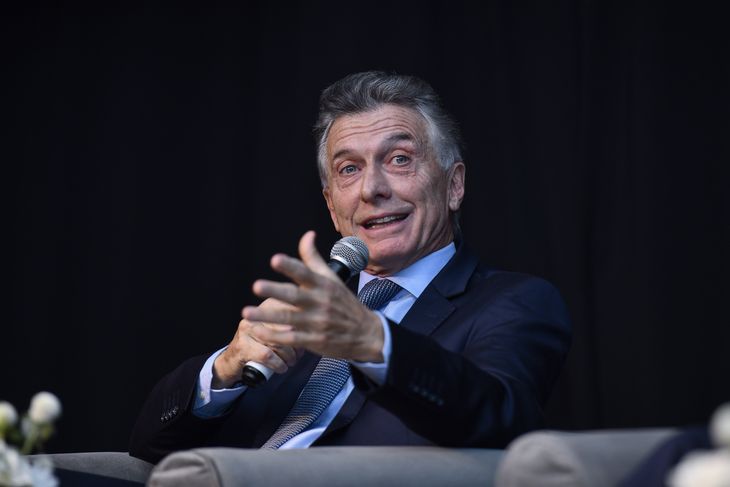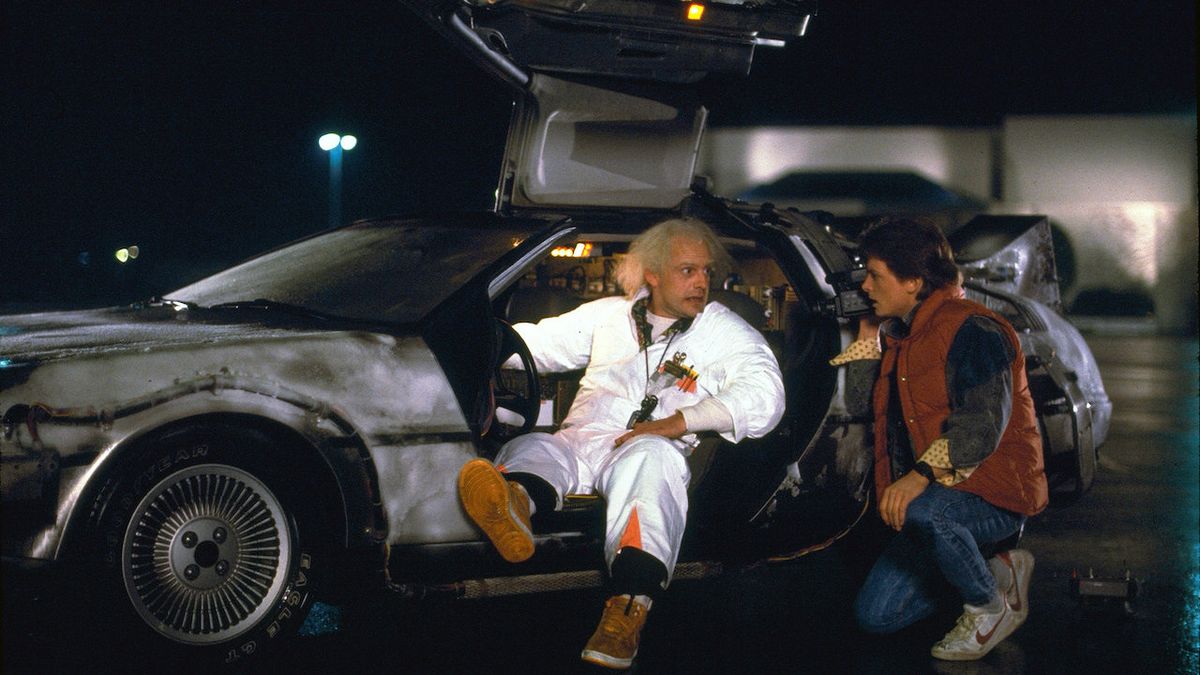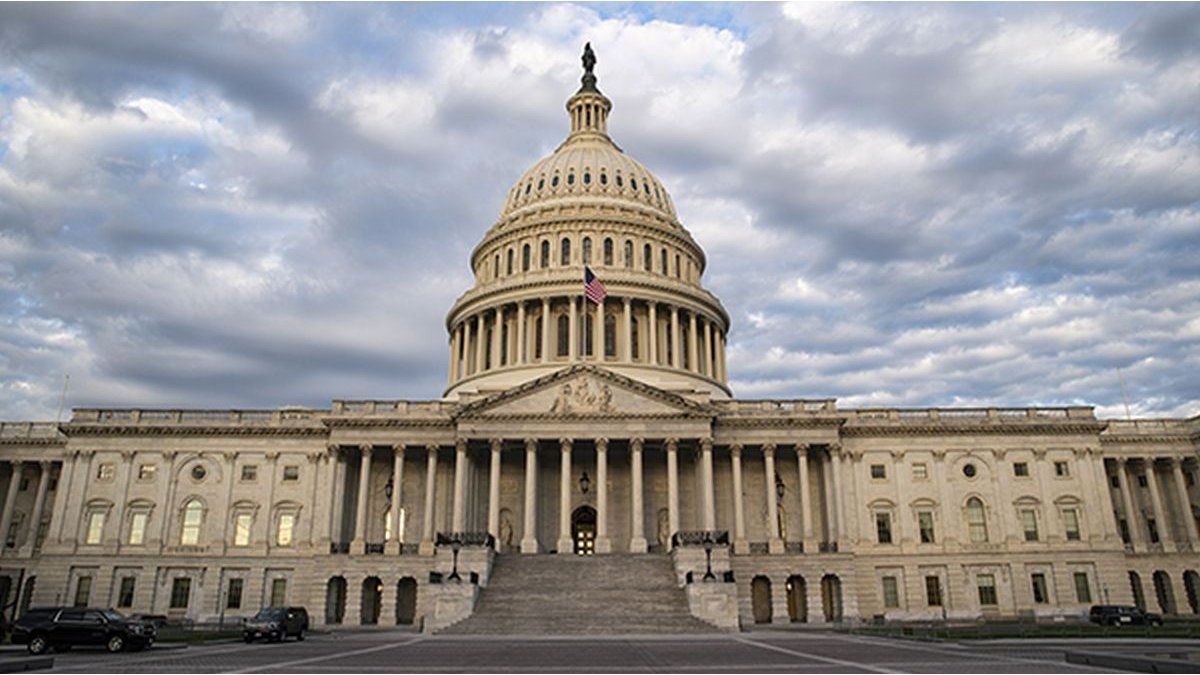Why could the Menem government consolidate, while Macri’s entered a deep decline within a few months of October 2017? What is more than 2025 to a political and economic model that lasts years or a scheme that runs out before 2027?
Let’s take Lorean and travel to the past in Argentina to see what happened in those two moments.
We arrive first to 1991, we can see adolescents listening in his discman “caressing the rough” the second album of divided, Oa Nirvana or Pearl Jam, the “Grunge” style was also imposed on the dress, in an Argentina directed by the Coco Basile that won the Copa América in Chile.
President Menem took a turn from the nationalist and popular campaign positions, through the Bunge and Born program to convertibility and neoliberalism. The world advanced to an economic openness and seemed the end of history, after the fall of real socialism in Eastern Europe.
Carlos-Menem-1.jpg
Argentina of the 90s, unrepeatable.
The international scenario was Benigno, Argentina headed for the Brady Plan and be able to borrow in the international market. The Public Business Privatizations Plan was very deep. Argentina grew above 9% in 1991 and 1992 and 5.7% in 1993. In those three years, Argentina had a fiscal surplus. From the hand of a growth, driven by the decline in inflation and indebtedness, with investment growth in non -tradable service sectors that did not generate currencies, unemployment began to rise strongly. Unemployment that was 7.6% in 1989, climbed 9.6% in 1993.
But Mexico’s crisis in 1994 stopped growth and Argentina had a deposit runin addition to a exchange rate. Unemployment climbed 11.4% in 1994 already 17.5% in 1995. The Government avoided the nominal devaluation. But there was another form of devaluation necessary to close the external sector deficit. The mechanism was that Argentina suffered a strong recession in 1995. GDP fell 2.8% in 1995. The devaluation was expressed in negative inflation (deflation) -0.2% year -on -year to February 1996, with a nominal salary fall. Social tolerance to adjustment had to do with a society hit by hyperinflation that accepted a high social cost to maintain price stability.
The rescue of the IMF in 1995, together with the greatest demand for imports in Brazil in the framework of the creation of Mercosur and the growth associated with the real plan along with an improvement in the prices of exportables allowed the convertibility to be injured, but survived 5 more years, but with a strong recession that began in 1998. The end of the film in 2001 is known.
Let’s take up the “De Lorean” and travel to 2017. Now our young people wearing sportswear or pants with openings, listen to music online on the cell phone. The “Synthesis of O’Konor” sounds of “He killed a motorized police” or “devouring intensity” of “the butterfly plan.” Also “Shape of You” by Ed Sheeran and Despacito with “Daddy Yankee, Fonsi and Justin Bieber, the most unloaded issues in the country. Argentina with Sampaoli anguish anguishly classified the World Cup in Russia. With Messi in the team and the” Messi “of the finances in charge of the Ministry of Economy, as today.
The Macri management as of December 2015, was characterized as in the 90s by a strong commercial and financial opening, which resulted in a deep financial and current account deficit, initially financed with indebtedness. In that phase there was a colossal financial speculation with strong income of speculative capital.
In 2017, Argentina grew by 3%, after falling 2.2% in 2016. Inflation fell to 25% from 41% in 2016. External indebtedness grew strongly with a fiscal deficit that had grown to 4.17% in 2016 and lowered slightly to 3.8% in 2017.
When the country’s indebtedness level became unsustainable, with a debt of 100% of the GDP, level above 2001, the government had to go to the IMF in June 2018, but despite the fiscal and monetary adjustment, with a fiscal deficit that at 2019 was only 0.44% of the GDP, inflation shot at 48% annually in 2018 and 2019. The adjustment could not stop, diverse diverse Episodes of devaluation that forced Macri to reimplant the stocks in 2019, after a deep capital exit.
Mauricio Macri (Libertad Foundation) .jpg

Mauricio Macri, the president between 2015 and 2019.
Photo: Libertad Foundation
The Government states that “this time is different” and that the crises of convertibility and the Macri government will not be repeated. The argument is based on the fact that if there is fiscal balance there is no crisis. But the argument does not resist historical evidence. Although the Macri government had a late fiscal balance, the truth is that during convertibility except 1996 and 2000, from 1991 to 2000, there was a continuous fiscal surplus and that did not stop the crisis.
Clearly the external sector deficit that was a trait of convertibility and the Macri government and was the cause of the vulnerability of the model. In both governments it was argued that the external deficit was the product of a growth process associated with the investment of the private sector that exceeded internal savings and not for a fiscal problem. When external savings for global or local reasons stop financing these processes, the crisis ensues.
The exchange rate delay can be sustained for a certain time with privatizations, shields, megacanjes, programs with the IMF, whitish, or “carry trace” but in the long run these processes end in a exchange and financial crisis. At the international level, the evidence is clear, in the late 90s Asian countries with fiscal surplus they had strong devaluations, when the current account deficit becomes non -financing.
The Government minimizes the external sector deficit, Argentina has been exchanging current account deficit for ten months. Since March that deficit is not only due to tourism and debt interest is also for goods. Argentina product of the commercial opening and the backward dollar will enter in commercial deficit this year, deficit that is only covered with loss of reserves or indebtedness.
The government wields another argument. Unlike convertibility where investments were made in non -tradable services, which did not generate currencies, this time Argentina would receive strong investments in the energy, oil, gas and mining sector.
In this primary export strategy, the largest exports – the government projects a growth of US $ 20 billion annually of mining exports, reaching levels comparable to Chile and Peru and exceeding exports of cereals and oilseeds – would allow to cover higher imports. The external deficit would be temporary and could be covered by debt until the deficit is reversed.
The truth is that it is not so obvious that there is a “rain of investments” nor did it happen in the Macri government. If the price of oil descends it is not profitable to invest in the “fracking” of Vaca Muerta. The overall demand of minerals may not be high if the global economy does not rebound, the climate change agenda goes back or the use of hydrogen is generalized as a cheap and abundant energy source.
If we have been pointing out in this column that is highly probable, if Trump does not deepen disruptive measures, that the speculative “trade” allows to sustain the exchange stability a few months, but in the long term except for optimistic scenarios of demand for exportable demands the external dynamics is not sustainable.
Thus, the political and economic perspectives, with an opposition that still fails to re -articulate, seem to have more similarity with 1991 than 2017, but that there is no crisis these months does not imply years of stability.
Recall that convertibility had a strong crisis in 1995, but even in the midst of that crisis, society valued stability and favored the ruling party despite a strong deterioration of economic activity, increasing unemployment and a strong increase in poverty and inequality.
A crisis does not necessarily imply an automatic change of the political direction in the short term if there is price stability. This occurs when society gets tired of disruptive styles, revalue institutional issues and fundamentally puts the issue of employment and salaries on inflation again.
It is that, although the Government is “successful” in avoiding or postponing for years a exchange crisis deepening an extractivist primary model, the productive and social consequences without a state that articulate development policies will be aggravated.
We got into “Delorean” we return to the future. We advance from 2025 we do not immediately see an external crisis, we continue in the decade, we cannot specify the year and what we see is not good. It changes fashion and as cyclically there is a return to the “retro”, those who like and those who do not, also “change the” melodies “that become fashionable.
We cannot know how much the process can take. There is a high global and local uncertainty, which determines when it will be the end of the film, in addition that the economic and social processes are not linear. It is likely that the “financial model” will end up time. No one knows how long.
Traveling to the future we see from the lived experience that in Argentina will finally unveil an external crisis, which will worsen the productive and employment situation and that social indicators break down. Past critics that we live and manage to overcome. There is a possibility of reversing that dystopian future, because there is never an “end of history” or misfortunes that last a hundred years, but for this both the opposition and society have a lot to do to build a sustainable and equitable alternative. Almost like winning another World Cup.
Source: Ambito
David William is a talented author who has made a name for himself in the world of writing. He is a professional author who writes on a wide range of topics, from general interest to opinion news. David is currently working as a writer at 24 hours worlds where he brings his unique perspective and in-depth research to his articles, making them both informative and engaging.




